NIL
Which college football program would be most like the Lakers if sold on the open market?
Big-time sports properties are selling for big bucks, and you have questions… From Willie If a private equity firm was given the opportunity to buy and college football program, which school would have the highest financial evaluation? I’m not as sure as everyone else that the PE revolution is coming to college football. It’s not […]
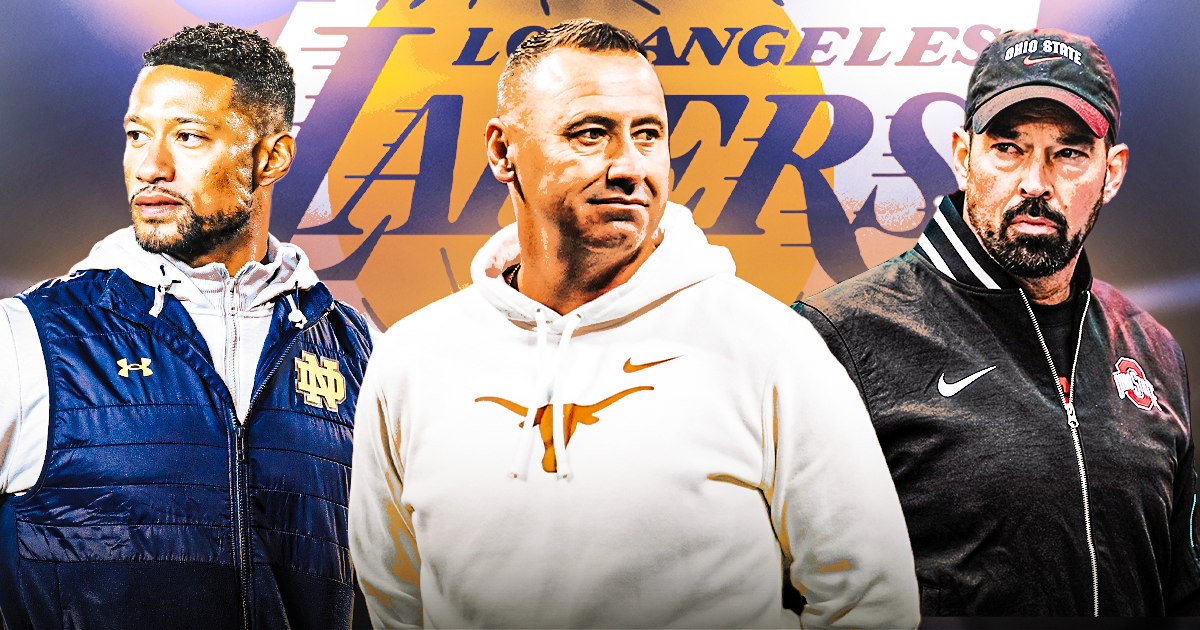
Big-time sports properties are selling for big bucks, and you have questions…
From Willie
If a private equity firm was given the opportunity to buy and college football program, which school would have the highest financial evaluation?
I’m not as sure as everyone else that the PE revolution is coming to college football. It’s not only that most programs are run by public universities. I’m struggling to see how a PE firm would extract the exorbitant return on investment it would expect from a large cash infusion.
The quickest way to make more money on college football is with the next media rights deal. But those take place at the league level, not at the school level (except for Notre Dame). And the only way the media rights money truly levels up is if all the leagues get together and sell their rights as one. (Which they might not even be allowed to do at this point.)
But Willie brings up an interesting question during the same week that the Buss family agreed to sell the Los Angeles Lakers for $10 billion. What programs are the college football version of the Lakers or the Dallas Cowboys or the New York Yankees? What teams would fetch the highest price if they suddenly went on the market?
I think the top three is fairly easy to determine.
1. Ohio State
The Buckeyes are the biggest guarantee of high ratings — seemingly independent of opponent. Ohio State has a massive, passionate alumni base and sells out a 105,000-seat stadium every game. The team is never bad.
Buckeyes fans are nodding, but they’re also sad because under the current deal, this is why Ohio State has to play so many noon games. When Fox knows that even Marshall-Ohio State is going to do a big number, that becomes a Big Noon game even though the outcome isn’t really in doubt.
2. Texas
It helps that the Longhorns have finally turned their resource advantage into results on the field, but let’s be real. A lot of people enjoyed watching Texas lose when the Longhorns struggled (by their standards) through the 2010s. Texas is a huge brand with a wealthy, motivated alumni base. If the Longhorns were for sale, the price would be massive.
3. Notre Dame
The Fighting Irish have networks fighting to televise their games, and they sell out every visiting stadium or neutral site. There are plenty of sidewalk fans who love the school, but there are even more people who hate-watch the Irish. The fact that Notre Dame is so relevant on the field again makes the Irish even more valuable now.
After that, it becomes more difficult to parse. Programs like Alabama, Georgia, Michigan and Penn State would occupy the next (still very expensive) tier. Then would come a list of other Big Ten and SEC schools that routinely pack huge stadiums and deliver consistent ratings.
But I think this exercise will fortunately remain strictly in the realm of the hypothetical. The schools will hopefully remain smart enough to keep these tremendously valuable assets to themselves and not sell off any pieces.
From Derek in South Bend
This email is too long to read, but I just want to plant the idea here, because you get into it some, but I think you’re not quite appreciating the value of the 4+4 College Football Playoff model for the Big Ten and the SEC.
You are absolutely right that the SEC might get five or six teams into the playoff in a 5+11 model.
Recall that a conference gets around $4 million for each team in the CFP. That might grow a little if the playoff expands, but not by much. The marginal benefit of going up from 4 to 5 or 6 in a given year is only $4 to $8 million for the whole conference.
It’s possible that also increases the odds of you advancing if you have more teams. But let’s face it. The 5th and 6th best SEC teams are not going to advance far and not going to win the national championship. So just getting more teams in gets you really only a little more exposure and a little more cash.
But imagine you had four guaranteed spots as a conference. You can suddenly do all kinds of things with it.
The SEC goes from eight to nine conference games — you’ve discussed this. Who cares if half the conference (more or less) gets an extra loss? You can light those losses on fire because you still get four in.
And suddenly, the SEC media rights package is more valuable–I assume, way more valuable than (sometimes) $4 million a year.
— B1G creates a play-in tournament at the end of the year (and you’ve hinted at this). Again, it’s not that Iowa deserves a shot at the playoff. It’s that the B1G can create a new package of games to sell, again way more than (sometimes) $4 million a year.
— SEC and B1G challenge. They can now schedule an intersectional rivalry for a series of years with prime matchups. And then you can sell that new package. Again, no big deal if you lose out of conference.
I know you’ve mentioned some of these possibilities, but I just want to point out, all three are (1) way more valuable than the 5th or 6th team entering the playoff some years, (2) you can use all of them as possible new revenue streams, and (3) they are feasible because you have four guaranteed slots you can do whatever you want with, and you’re not jockeying with other conferences in the regular season to try to schedule strategically of tough but not too tough.
In any case, I think the point is, giving up a 4+4 model is literally tens of millions of dollars each year that the B1G and the SEC would be giving up, and it’s a reason why it’s still being discussed.
Either Derek is running a burner account for Big Ten commissioner Tony Petitti or he has a future as a TV executive.
But the factor to remember about the CFP debate over multiple automatic bids (the Big Ten’s preference) and more at-large bids (everyone else’s preference) is it isn’t only about money. Power is as important or more important in this particular negotiation.
Yes, the SEC would make more money by agreeing to the format that allows four automatic bids each for the Big Ten and SEC, two each for the ACC and Big 12 and one for the highest-ranked champ of the other leagues. That system also would include three at-large spots, and presumably, the Big Ten and SEC believe their teams would claim the bulk of those. This format would allow the SEC to easily shift to nine conference games with no fear of losing playoff spots, and Disney/ESPN would, in turn, increase its payout to the SEC.
But even though we’re assuming the Big Ten and SEC will somehow meld together in the coming years into some sort of super league, that isn’t necessarily how those inside the conferences view it. SEC leaders want their league to be considered the most powerful and most influential when the next CFP deal comes around. Not coincidentally, that happens just before the SEC’s current media rights deal expires. While there are potentially bigger financial gains there, the power dynamic still might mean more.
If the sport is heading for further consolidation, someone will have to run the more consolidated entity. Neither the leaders of the Big Ten nor the SEC want that to be someone who isn’t them. But they also probably don’t want to run it together. In their minds, someone has to come out on top.
And that’s what all of this is really about. Because if it were about money, this format would have been decided long ago.
From Ryan
I was just catching up on yesterday’s show and the Diego Pavia discussion got me thinking about eligibility restrictions. I believe you are both correct about Pavia’s NFL prospects. He’s likely a late round pick or UDFA and hopefully he’ll catch on somewhere. If that prediction comes true, he will make considerably less money than he is making now at Vandy and may only survive for a short time in the league.
My question is when do you think we will see a player sue over eligibility restrictions?
It seems like you could make a pretty solid argument that the NCAA is violating the Sherman Act and restricting players’ earning potential by imposing eligibility limits.
Diego Pavia seems like the perfect candidate for this argument and he could, in theory, stay in college football for several more years while making millions of dollars each season as opposed to trying his luck in the NFL where he might not even be able to make a 53 man roster.
For the record, I don’t want this to happen and believe it would be bad for the sport but I think it’s an argument that could be won from a legal perspective. (Side note: I’m not a lawyer but I, like Ari, have watched a lot of Law & Order)
What do you guys think? Will we ever see this and if so, when?
We’re actually seeing it over and over, Ryan. Multiple lawsuits have been filed since the Pavia ruling, but the courts have not been as unanimous as they seem to be in the cases regarding NCAA rules that restricted players’ incomes.
Just last week, a judge denied former Tennessee basketball player Zakai Zeigler’s request for an injunction that would have allowed Zeigler to keep playing in college after exhausting his eligibility. Zeigler has appealed.
In April, a North Carolina judge denied a request for injunctive relief from several former Duke football players who also challenged the NCAA’s eligibility rules.
Pavia’s case is different because it involves his time in junior college and whether the NCAA should consider 2020 an exempt year because the NCAA paused the eligibility clock for every athlete playing in the NCAA during the 2020-21 school year. The newer crop of cases tend to involve players who simply want more years of eligibility.
In antitrust law, a court may rule that a certain restriction is justified if there is a pro-competitive reason for it. In these cases, the schools and NCAA might be able to convince a court that limiting participation to the traditional college window makes the product more appealing to the consumer.
The schools and NCAA failed miserably when they argued that denying players money made the product more appealing, but I suspect they might have better luck with this argument. Either that, or the courts will disagree and we’ll someday see a 42-year-old Johnny Manziel suiting up for a Sun Belt school.
NIL
‘Athletes never forget’ | Sampson Independent
Big news hit the WNBA Monday morning, and with it came some news for a Sampson County native, too. Cleveland, Detroit and Philadelphia were all approved for teams at the highest level of women’s basketball once more, and Lakewood alum Chasity Melvin — a first-round pick by the original Cleveland Rockers, a WNBA all-star […]
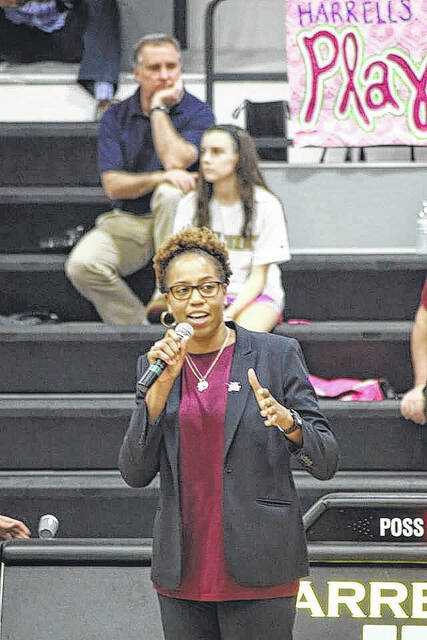
Big news hit the WNBA Monday morning, and with it came some news for a Sampson County native, too. Cleveland, Detroit and Philadelphia were all approved for teams at the highest level of women’s basketball once more, and Lakewood alum Chasity Melvin — a first-round pick by the original Cleveland Rockers, a WNBA all-star and a North Carolina athletics Hall of Fame member — said she was inundated with calls and messages when the news broke.
“It was amazing. It was really amazing for me. It was a dream come true,” Melvin shared in an interview about her time in Cleveland. “I had such a great appreciation because I had actually entered the ABL before the WNBA … So I got drafted by the ABL, and then I was fortunate enough to get drafted by the WNBA. I was so appreciative of the Cleveland Rockers taking me at the 11th pick.”
A bit of a culture shock for the North Carolina native came next, she admitted.
“I had never really been to the Midwest, so to go to Cleveland with my family, it was just a lot of fun for us coming from southeastern North Carolina and being able to go out there,” the former Leopard added. “It was kind of a mutual culture for North Carolina and Cleveland, you know, hard hard-working town. That’s where I was from — humble beginnings. For me, it just correlated. And I was super excited to be a part of the Rockers.”
Shortly after arriving in Cleveland, things clicked for Melvin, and she got to work for the Rockers in the 1999 season — just the third in Cleveland’s existence as one of the eight founding members of the WNBA. But, to get to that echelon of the sport, she first made a pit stop at N.C. State, where she made a name for herself.
In fact, there wasn’t a season that Melvin was with the Wolfpack where the team didn’t make the NCAA tournament, with a trip every year from 1995 through 1998.
One visit to the Wolfpack’s athletic Hall of Fame website will show a slew of accolades for the 2014 inductee, like her four separate All-American awards, her honorable mention for the Wade Trophy, ACC and NCAA awards, her No. 4 spot in both points and rebounds and her program records for free throw attempts in a season and a career for N.C. State. The page also explains that she is one of seven N.C. State women’s basketball players with their jersey retired, a member of the ACC 50th anniversary team, and she even received an invite to the Olympic trials in 1996.
Although her story has been told been over and over again, it was Monday’s news that brought the retelling to the surface once more, now that her former team was brought back.
The Cleveland Rockers, which were founded in 1997, folded in 2003 after owner Gordon Gund and his family couldn’t find a buyer just a year after purchasing the team outright from the league. Melvin and her teammates were sent to other teams in a dispersal draft, but not before a playoff berth, which saw the Rockers fall to the Detroit Shock — another team that recently got approval to return to the league — in the first round of the playoffs that ended with Detroit winning the championship. Melvin was taken as the second player overall in the dispersal draft, landing in Washington, D.C., to play for the Mystics.
“My mindset coming into the WNBA was that I’d always been a proponent of women’s basketball,” the now-TV analyst shared. “My dad had always told me, ‘Every time you play, you’re introducing people to the women’s game, so put on a show.’ I always wanted to make sure I entertained people, make sure I inspired people, and make sure I gave my best effort on the court. I wanted people to feel my passion for playing the game of basketball, and feel my enjoyment of it and my appreciation of it.
“And I’d always been that way. It was kind of surreal for me as well, because I used to tell people in my small town in North Carolina that I was going to play professional basketball. People were quick to say, ‘Oh, no one cares about women’s basketball. They don’t have women’s pro teams and college is as far as you’ll go.’”
In the 2001 season, across just 32 games, the Rockers saw the best season in the team’s short existence, and the No. 1 seed after taking the Eastern Conference, but North Carolina’s Charlotte Sting upset the Rockers in the first round. That season would be Melvin’s all-star campaign, when she started 20 of the 27 games she played in, averaging 27.9 minutes a game and a 9.9 PPG and 5.7 boards per contest as well.
“Even throughout my collegiate years, and obviously I have the records and high achievements and decorated career there to prove it, I felt like every year I was preparing myself to be a pro. I was always preparing myself for if there was ever an opportunity, I wanted to be ready,” she continued. “That’s how I pushed myself.”
Although an athlete from a young age, Melvin said her time in Cleveland introduced her to a sport she had never seen in person.
“I had a great rookie season,” she recalled. “The fans were unbelievable. I loved playing in the Gund Arena. Like, I was so strictly basketball, but then I came to Cleveland, a great sports town, and I had followed the NBA with my dad and my brother, so I knew about the Cavs. I was just as hurt as the Cavs when Jordan hit that shot. But to fall in love with the Cleveland Indians.
“Mr. (Gordon) Gund would make sure we would go to the Indians games as a team to develop familiarity and relationships with the teams, so we loved going to the Indians games. That was so much fun for me. And that was the first time I had gone to a major league baseball game.”
Proving her knowledge of the early aughts Cleveland baseball team, she reminisced about telling her friends about her experiences: “I used to tell all my friends, going to the baseball games is fun. Like, watching it on TV is totally different, but being in that atmosphere, being there when Kenny Lofton was there, he came to the (Rockers) games and sat courtside. We loved going to the Indians games, that was big for me.”
Melvin’s time in Cleveland, like her teammates’, was cut short — but not by her own doing. The team announced in December of 2002 that they would be folding.
“They taught us how to be pros. I’ll never forget Wes Unsled, when he was there. He used to come and talk to the team and teach us about representing the organization and how to be a pro, so I learned some valuable traits being there with the Cleveland Rockers,” Melvin said. “It was completely devastating for me when the Rockers folded. We kind of got the news early, mid-season. That year, we really tried to fight, like maybe if we could win the championship, they’ll keep the team. We lost to Detroit that year and they went on to win the WNBA championship.”
With a quick shoutout to announcers like Tom Hamilton and Jim Donovan for their work with Cleveland sports, she continued her praise for the town, which is something to note after current Indiana Fever player Sophie Cunningham’s comments in regards to the WNBA’s announced expansion to Cleveland and Detroit.
“For me to go into a professional sports town like that, that was a dream come true, because I was considered a ‘tomboy’ growing up, so I watched all of the sports with my dad. We were a big basketball family. I grew up watching the NBA. I patterned a lot of my games after some of the great centers, like Hakeem Olajuwon with the baseline spin move,” said the 6-3 center. “I watched the league for a very long time, so to come to the Cavs and play for the Rockers and then the owner, Mr. Gund, was unbelievable to us.”
That’s when Melvin began her praise for the wealthy philanthropist, who for many in Northeast Ohio was a household name for many years.
“He believed in women’s sports way before other people really believed in it, and obviously, that was a big reason why we folded because it was a change of ownership,” she continued. “Even though he was blind, we really felt like he saw each and every one of us. He was a hands-on owner, and that’s rare in professional sports, especially for women’s sports. We were really spoiled. There was a lot there for the Cleveland Rockers, so for the Cleveland team to be coming back, I know the fans are super excited, the city is excited.”
Excitement from the fans came pouring in quickly, she said.
“The fans from the Rockers have always been supportive through the internet with Facebook, Twitter, people DM or send me pictures, and now that the kids are grown up, they say, ‘We used to come to the games, we used to watch you when we were kids,’ so I think it’s going to be huge for Cleveland to bring the Rockers team back.”
After spending over a decade in the WNBA, Melvin travelled internationally to play basketball, in places like Spain, Israel and other countries that are home to overseas basketball.
“First and foremost, it was going overseas for my first time,” she said. “I was literally coming from the South. I was a deer caught in headlights. That was really what it was.”
She spoke on things like experiencing other cultures and the rigorous schedules involved.
“Traveling abroad, year after year, and coming back and playing in the WNBA, it just made me culturally diverse. I have a lot of multicultural relationships because of that. It’s broadened my horizons. It’s given me a unique resume compared to a lot of other pro players because I’ve played in nine different countries, I’ve won championships in six of them, and I’ve just developed relationships across the board.”
One thing Melvin discussed was mental health, a topic that has seen more support in this generation of athletes, she said, compared to her own time on the court.
“For the fans, their perspective is that they’ll never understand that athletes never forget,” she said, in a bit more somber of a tone than before. “I know I’ve heard Dawn Staley in many interviews say she’ll never forget losing at Virginia and not winning that NCAA championship, so it’s something we live with forever. Our careers are so short, and we retire from playing that pro sport, but the games and those moments live with us for eternity. We’ll be in the old folks’ homes still remembering, like dang, if I would have made that one free throw. So, for most of the pro players, we’re so passionate about the game. It just never leaves us. The wins, the losses and the relationships.
“That’s what you miss most when you stop playing — those relationships with your teammates,” she added.
With an anecdote from current WNBA player Courtney Williams, Melvin said it was a great definition of how players deal with the mental aspect of things like social media.
“These people aren’t real. These people aren’t my friends. These people don’t know me, they don’t know how hard I work,” were Williams’ words, which Melvin found solace in.
“I do think, with the positive atmosphere around mental health, and the fact that these athletes are talking to therapists, they have mental health forums. We didn’t have that while we played. I think most athletes in my generation were taught to compartmentalize and kind of like, go in character once they stepped on the court, and I think the current athletes are allowed to be themselves. They’re allowed to take mental health break days. And there’s not a taboo around needing to talk to a therapist or being depressed,” Melvin added.
Melvin and her generation, like Lisa Leslie or Tina Thompson, paved the way for the meteoric rise of women’s basketball recently, with names like Caitlin Clark and Angel Reese being spoken across the country much more than women’s basketball players of the past. Chasity shared her thoughts on the subject:
“I think two things (caused the increased viewership). I think the first thing is NIL in college,” she began. “I think NIL just boosted women’s college basketball across the board. When I played, when Diana Taurasi played at UConn, everyone kind of knew about UConn, but only once they won the championship. And I think NIL, for these athletes to have brand sponsorships, to be in commercials, it just eased the way and it helped fans cross over from collegiate athletics to the pros, because there was always a disconnect from women’s college basketball and the WNBA.
“The fans were like, ‘OK, who’s next?’ but didn’t really follow collegiate stars into the WNBA, but I think the NIL helped bridge the gap between collegiate fans crossing over to the WNBA, so that’s helped tremendously. And then with that help, with seeing the Caitlin Clarks and Angel Reeses, the different players in commercials, like, hey, they’re stars. They’re not just good women’s basketball players, but they’re stars, similar to the NBA players that you see in commercials.”
The other aspect of the rise she mentioned was along the same lines, about how people seeing these players every day, and in the spotlight, made it less taboo to talk about.
Today, Melvin serves in a media role for the Washington Mystics, something she dreamed of as a child, she said. She majored in communications at N.C. State, which paved the way for her post-retirement career.
“My whole dream, my entire dream before the pro teams came about, was to be the next Robin Roberts. So it’s kind of like I’m living backwards, so now I’m actually going after the dream I had in college and what I went to school for, and that was to become a sports analyst on-air talent,” the analyst said.
“This is my third year. I hadn’t really been public about it a lot. It’s not national TV, it’s on their app, but I’m enjoying it,” she shared.
Reach Brandt Young at (910) 247-9036, at [email protected], or on the Sampson Independent Facebook page.
NIL
Iowa State Cyclones Coach Offers Compelling Take on NIL Spending
The college football landscape was forever altered once NIL burst onto the scene, and Iowa State Cyclones head coach Matt Campbell is fully aware of that. However, there remain many questions about NIL funding and spending, and while the recent House Settlement cleared some things up in an attempt to level the playing field, many […]
The college football landscape was forever altered once NIL burst onto the scene, and Iowa State Cyclones head coach Matt Campbell is fully aware of that.
However, there remain many questions about NIL funding and spending, and while the recent House Settlement cleared some things up in an attempt to level the playing field, many of the aspects are still a bit cloudy moving forward.
Campbell was asked about the direction of the sport at Big 12 media day this week, and he provided an honest answer on how he feels the whole NIL process is unfolding.
“I think it’s too early to tell,” Campbell said, via Eugene Rapay of The Des Moines Register. “Is this really the number? Are there ways around the number? … I think we live in a world in college football that looks like Major League Baseball in a lot of ways. … I hope that we’re there, but I don’t think we have any clarity.”
Campbell is certainly not alone in that regard. NIL has been a hot topic of discussion for coaches across the country for quite some time now, and it will always be something that even the very best programs will have to strategically traverse in the years to come.
That being said, Campbell seems satisfied with the outcome for Iowa State.
“If you look at the top 20 guys in our program — probably could have made a heck of a lot more money at a lot of other places, and we were able to keep our kids home,” Campbell said. “That was huge and my hope is we can continue to build forward.”
The Cyclones won 11 games last year, which was a school record. They also defeated the Miami Hurricanes in the Pop Tarts Bowl.
Iowa State’s football program has been gradually growing thanks to Campbell. We’ll see if the Cyclones are ultimately able to turn into a national power.
MORE: 49ers QB Brock Purdy Named in Absurd Four-Team NFL Trade Proposal
MORE: Iowa State Cyclones Weapon Could Break Massive Record
MORE: Jets RB Breece Hall Receives Bad News Thanks to Tough Prediction
MORE: Iowa State Cyclones Conquer Big 12 Foe for Major Recruiting Win
MORE: Iowa State QB Rocco Becht Brutally Disrespected in NFL Draft Prediction
NIL
‘I am tired of this shit’
Chicago Sky (5-12) forward Angel Reese has reached her boiling point when it comes to WNBA officials. Reese became the latest high-profile star to call out officials, saying “I am tired of this shit” after Chicago’s 80-75 defeat to the Minnesota Lynx (17-2) on Sunday. “It’s tough when you talk to officials, and I asked […]

Chicago Sky (5-12) forward Angel Reese has reached her boiling point when it comes to WNBA officials. Reese became the latest high-profile star to call out officials, saying “I am tired of this shit” after Chicago’s 80-75 defeat to the Minnesota Lynx (17-2) on Sunday.
“It’s tough when you talk to officials, and I asked them, ‘Hey, we’ve only been to the free throw line twice up until the fourth quarter,’ and she tells me it’s not her job,” Reese said. “So, it’s frustrating because I know how hard we are battling inside, and I think that we came down and fought as hard as we could with what we had, and I just know we continue to grow in this.
“I think this is a leaping step for us, and obviously we know we can compete with the best, but [the officiating] has to be fixed. And I don’t give a damn if I get fined because that shit is cheap. I’m tired of this shit. ‘Cause I’ve been nice, and I’ve been humble with it, but I am tired of this shit.”
Minnesota pulled out the narrow victory to notch their franchise record 11th consecutive home triumph to start the season. The Lynx went to the free throw line 17 times. The Sky, meanwhile, attempted just eight shots from the charity stripe. Reese continued her criticism of officials on social media.
“Idgaf. DO BETTER. @WNBA,” Reese tweeted.
Angel Reese makes WNBA history in Sunday’s loss to Lynx
In spite of the loss, Reese put on another dominant performance. Reese, the league’s rebounds leader, grabbed 17 boards, to go along with 16 points and six assists. She became the first player in league history to have back-to-back games with 15 plus points, 15 plus rebounds and five plus assists. Her five-game streak of 15 or more rebounds is the longest in WNBA history.
Reese isn’t the first WNBA star to call out the officiating around the league. Los Angeles Sparks (6-13) guard Kelsey Plum went off on officials after the June 9 overtime loss to the Golden State Valkyries (9-8).
“I drive more than anyone in the league, so to shoot six free throws is f*cking absurd,” Plum said. “I got scratches on my face, I got scratches on my body. These guards on the other team get these ticky-tack fouls, and I’m sick of it. … Don’t know what I need to do. I’ve talked to the refs nice, I pray before the game, like, f*ck, I’m over it.”
NIL
Michigan lawmakers introduce state bills paving way for college athletes to unionize
A new Michigan House bill considers student-athletes as employees, while another looks to remove a new hurdle for athletes trying to secure deals based on their name, image, and likeness. Democrats introduced both in the Michigan State House, saying they couldn’t come at a more pivotal time. Since July 1, student-athletes must disclose any NIL […]


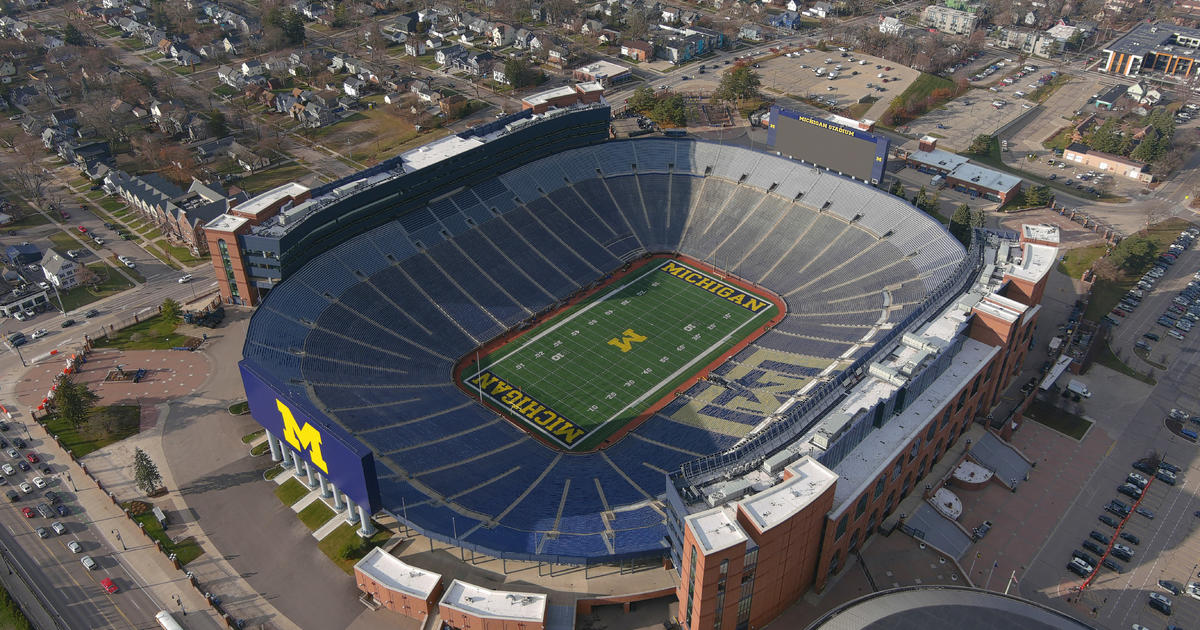
A new Michigan House bill considers student-athletes as employees, while another looks to remove a new hurdle for athletes trying to secure deals based on their name, image, and likeness.
Democrats introduced both in the Michigan State House, saying they couldn’t come at a more pivotal time.
Since July 1, student-athletes must disclose any NIL deals made outside the university worth more than $600 to a new third-party entity called “NIL Go.” The NCAA says this ensures both sides are getting a fair value, but Rep. Joe Tate says otherwise.
“We want to be clear to make sure that no entity is allowed to interrupt a student-athlete’s ability to enter into a contract,” said Tate, D-Detroit. “Then they don’t have to submit a contract to the NCAA for approval. If you’re going to a university in Michigan, it restricts them from doing that.”
Now that universities can directly pay student-athletes as of July 1, a second bill would consider student-athletes as state employees and remove restrictions, allowing them to unionize.
“So now, students are being paid directly for their work—for their name, image, and likeness—for the work they do, and so that’s why we’re introducing this bill now to make sure the students are the ones leading the conversation and leading the contract negotiations for their compensation,” said Rep. Carrie Rheingans, D-Ann Arbor.
Former Michigan State football captain Maverick Hansen says he supports the student athletes following in his footsteps.
“I think it’s going to be huge because athletes actually have a say in what they should be getting and what their value is,” Hansen said.
Several republican lawmakers have spoken out against the bill, saying student-athletes are already compensated enough through scholarships and preferential treatment, something Representative Tate says isn’t enough in this day and age, as a former college football player himself.
NIL
Topping, Scott Added to Softball Staff
CORVALLIS, Ore. – Oregon State softball has completed the coaching staff ahead of the 2026 season, as announced by head coach Laura Berg. Jenny Topping and Morgan Scott have joined the coaching staff. Scott will make the move from the College of Charleston (S.C.) while Topping joins from Cal State Fullerton. Topping will make her […]
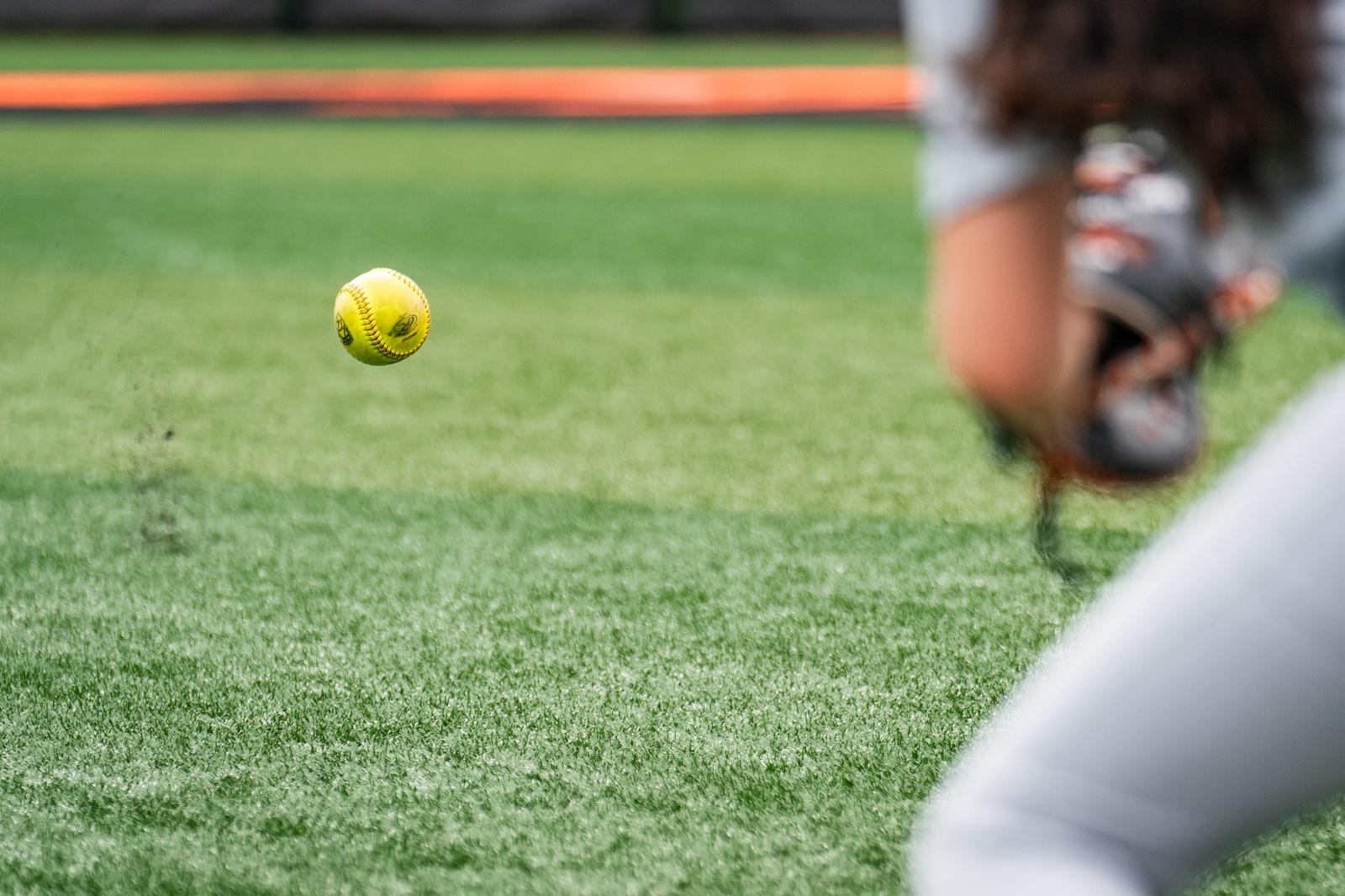
CORVALLIS, Ore. – Oregon State softball has completed the coaching staff ahead of the 2026 season, as announced by head coach Laura Berg.
Jenny Topping and Morgan Scott have joined the coaching staff. Scott will make the move from the College of Charleston (S.C.) while Topping joins from Cal State Fullerton.
Topping will make her way to Corvallis after a season with the Titans and carries a decorated resume that includes an Olympic Gold medal (2004) and was a four-time All-American with Fullerton and Washington. During her playing days, she led the Titans to three Big West titles and slashed .443/.573/.771 while holding top-five marks in doubles (44) and home runs (33) in addition to holding seventh place in runs batted in with 128.
After her time as a student-athlete, Topping represented the USA in the 2004 Olympics, a pair of World Championships and Pan-American Games. She played professionally for the Akron Racers, in Japan for the Toyota Shokki and was a NPF champion. In 2015, she was inducted into Cal State Fullerton’s Athletic Hall of Fame
In her sole season in South Carolina, Scott directed the Cougars to the Coastal Athletic Association’s upper echelon in pitching. The Cougars ranked second in strikeouts (238), fourth in shutouts (7) while allowing among the fewest earned runs (186) in the league. Scott mentored Mackenzie Mathis to three CAA Rookie of the Week nods on the way to second team All-CAA laurels.
Scott is no stranger to the Beaver State, having played for Oregon for two seasons following three at UNCG. In her time as a Duck, she was twice named NFCA All-Region and led the squad with wins in 2024 after being named to the Pac-12’s Second Team in 2023. While in North Carolina, she was twice tabbed the Southern Conference’s Pitcher of the Year in addition to the league’s 2021 Freshman of the Year nod. She closed her stint with the Spartans as their program’s all-time leader in strikeouts with 286.
The Beavers are coming off a 2025 season that saw seven student-athletes garner all-conference honors.
OUR MISSION
Oregon State Athletics strives to Build Excellent Authentic Visionary Student-Athletes (Go BEAVS)
NIL
Iowa State Cyclones Coach Offers Compelling Take on NIL Spending
The college football landscape was forever altered once NIL burst onto the scene, and Iowa State Cyclones head coach Matt Campbell is fully aware of that. However, there remain many questions about NIL funding and spending, and while the recent House Settlement cleared some things up in an attempt to level the playing field, many […]

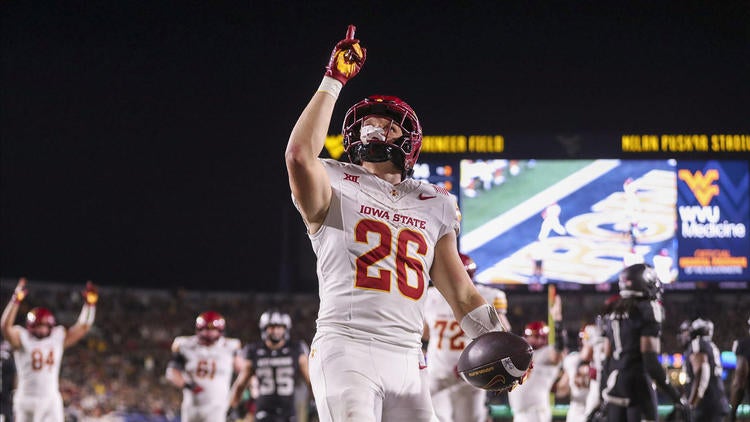
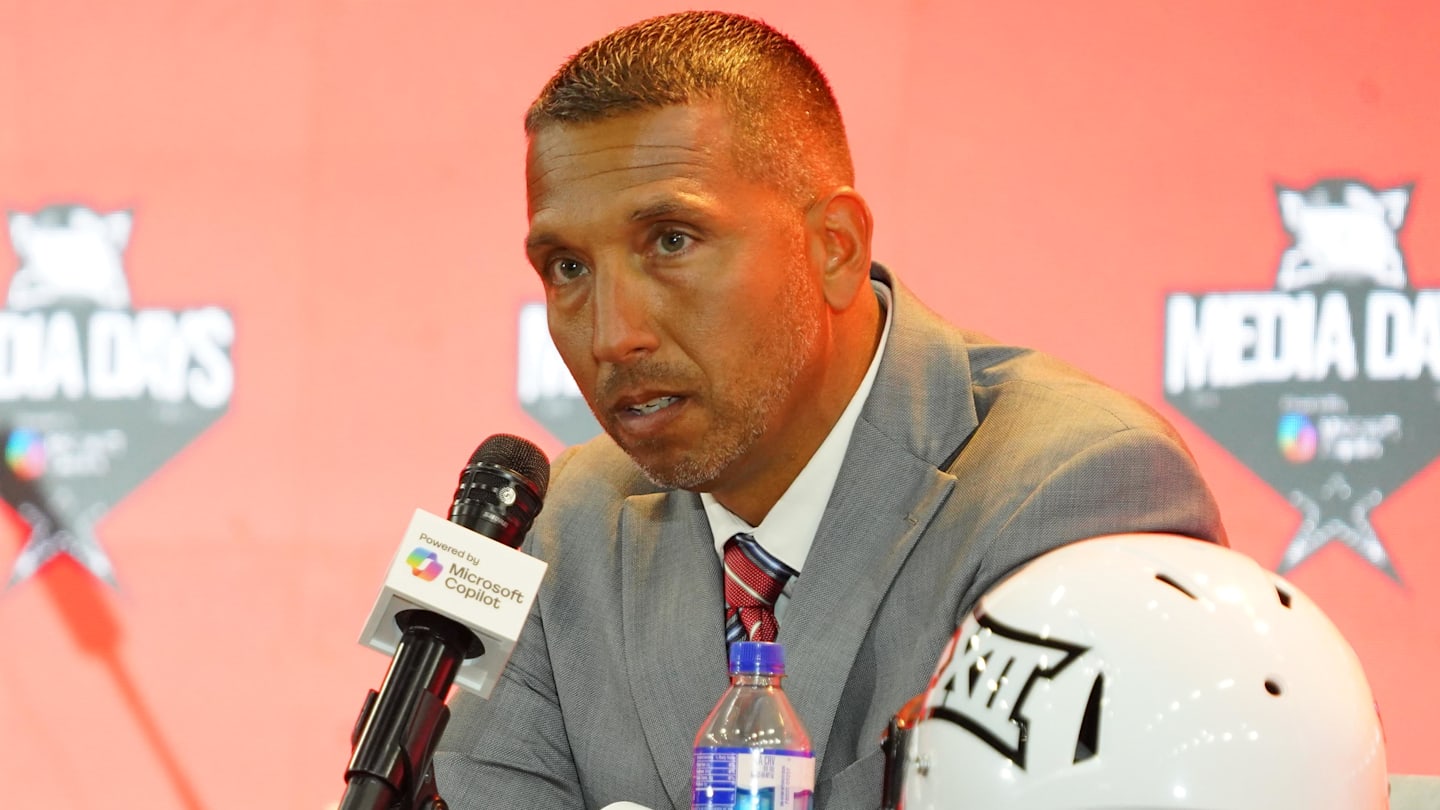
The college football landscape was forever altered once NIL burst onto the scene, and Iowa State Cyclones head coach Matt Campbell is fully aware of that.
However, there remain many questions about NIL funding and spending, and while the recent House Settlement cleared some things up in an attempt to level the playing field, many of the aspects are still a bit cloudy moving forward.
Campbell was asked about the direction of the sport at Big 12 media day this week, and he provided an honest answer on how he feels the whole NIL process is unfolding.
“I think it’s too early to tell,” Campbell said, via Eugene Rapay of The Des Moines Register. “Is this really the number? Are there ways around the number? … I think we live in a world in college football that looks like Major League Baseball in a lot of ways. … I hope that we’re there, but I don’t think we have any clarity.”
Campbell is certainly not alone in that regard. NIL has been a hot topic of discussion for coaches across the country for quite some time now, and it will always be something that even the very best programs will have to strategically traverse in the years to come.
That being said, Campbell seems satisfied with the outcome for Iowa State.
“If you look at the top 20 guys in our program — probably could have made a heck of a lot more money at a lot of other places, and we were able to keep our kids home,” Campbell said. “That was huge and my hope is we can continue to build forward.”
The Cyclones won 11 games last year, which was a school record. They also defeated the Miami Hurricanes in the Pop Tarts Bowl.
Iowa State’s football program has been gradually growing thanks to Campbell. We’ll see if the Cyclones are ultimately able to turn into a national power.
MORE: 49ers QB Brock Purdy Named in Absurd Four-Team NFL Trade Proposal
MORE: Iowa State Cyclones Weapon Could Break Massive Record
MORE: Jets RB Breece Hall Receives Bad News Thanks to Tough Prediction
MORE: Iowa State Cyclones Conquer Big 12 Foe for Major Recruiting Win
MORE: Iowa State QB Rocco Becht Brutally Disrespected in NFL Draft Prediction
-

 Technology2 weeks ago
Technology2 weeks agoPet fitness and wellness trends for a healthier and happier dog
-

 College Sports2 weeks ago
College Sports2 weeks agoWAC to Rebrand to UAC, Add Five New Members in 2026
-

 Motorsports1 week ago
Motorsports1 week agoWhy Cosmetics are Making Up for Lost Time in Women’s Sports
-

 Professional Sports2 weeks ago
Professional Sports2 weeks agoAlex Pereira responds to rumors of UFC heavyweight title fight with threatening message
-
College Sports3 weeks ago
Women's Basketball Thanks Shannon LeBeauf for 14 Seasons
-

 College Sports2 weeks ago
College Sports2 weeks agoAlabama Basketball
-

 Professional Sports2 weeks ago
Professional Sports2 weeks agoFrancis Ngannou sends Dana White a message following Jon Jones' shock UFC retirement
-

 Motorsports2 weeks ago
Motorsports2 weeks agoNASCAR This Week – Patriot Publishing LLC
-

 College Sports2 weeks ago
College Sports2 weeks agoA new era of Dickinson hockey begins behind the bench – The Dickinson Press
-

 Health2 weeks ago
Health2 weeks agoFlorida assault survivor shares hope for change with new mental health law


































